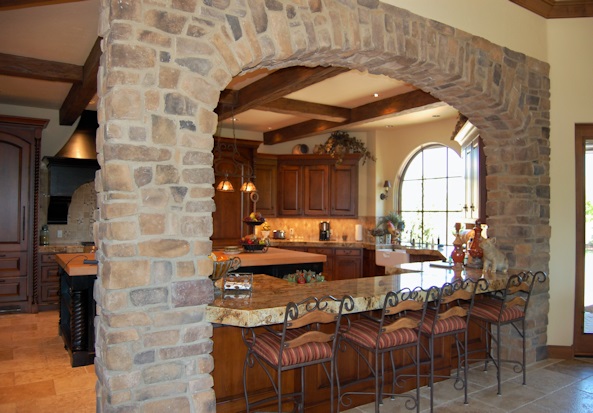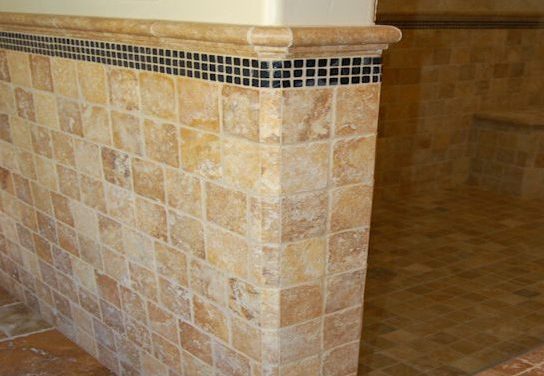People often assume that natural stone is “stain-proof,” however all stone is porous to some degree. If not properly treated with a protective sealer, water, oils or other liquids can easily penetrate the stone, leaving behind unwanted stains.The good news is that once treated with a protective sealer, natural stone is ready for carefree, everyday use.
Installation of any stone requires some chemical sealant be applied to clog its pores and prevent moisture from seeping into it. Slate is by far the easiest stone to maintain. It is resistant to water, and stains, it hides dirt in its mottled surface, and it can withstand more abuse then almost any other. It is also easy to make it water safe, with just one or two applications of a chemical sealer. Travertine, limestone, and sandstone, are all going to require an impregnator sealer which is designed to be absorbed “in” the stone surface, so that water and stains cannot permeate their surfaces.
Stain resistance is the primary reason for sealing. Choose a sealer that offers protection against the contaminants common to the area of the stone installation. For example, in kitchens or food serving areas, use a sealer that provides excellent oil resistance.
Once a sealer has been used successfully, it is a good idea to stay with the same sealer when eventual reapplication is needed. This should be done when the surface wear on a surface-type sealer and loss of stain resistance on a penetrating-type sealer is no longer working. High quality sealers that can be purchased at tile stores, should last at least five years, as long as strong cleaning chemicals have not been used. Proper cleaning instructions should be listed on the container.
Penetrating-type sealers will never achieve a surface shine. Some penetrating-type sealers may slightly darken or lighten the natural stone. Coating type sealers usually highlight the stone surface, thus bringing out the real color and nuances in the stone not always visible before sealing. If the primary requirement is to darken or color enhance a tumbled or faded stone, then a color-enhancer sealer should be considered. There are several stone enhancer-sealers available today that enhance and seal, not requiring a separate sealer application. Regardless of the product selected, always test a small area to determine if the desired appearance is achieved





